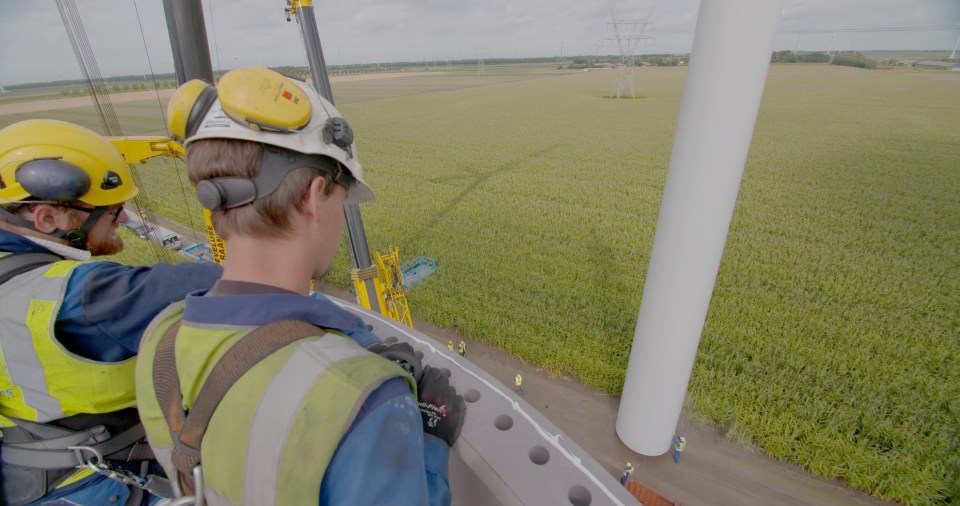Wind turbines are getting old, here’s how the UK’s ageing fleet keeps spinning

Wind turbines are routinely regarded as an energy source of the future, as debates spin over its upcoming role in the country’s supply mix.
Yet, they are also a story of our past, with wind turbines stretching across our coastlines and nestling in our sunlit uplands for decades, with the first swirly structure being hoisted in 1887 by a pioneering Scottish engineer wanting to light up his holiday home, before a growing pipeline slowly emerged over the following century.
The UK now has a 28GW bedrock of wind, both on land and sea, a robust fleet that rivals any country in the world.
However, some of these turbines are closing in on their operational shelf life of 25-30 years, with data from trade association Renewable UK revealing that 546 turbines operating in the UK across 33 projects were installed in the 1990s, with a total capacity of 256M – enough for over 150,000 homes.
This is a growing challenge for the domestic wind industry.
Old wind turbines present early challenge
Some, naturally, are pulled down.
Just under 150 turbines have been decommissioned since the start of the last decade.
But that number is growing; 26 have been torn down this year alone – while challenges around extending the lifespan of new turbines will soon heighten.
Up to 90 per cent of a wind turbine can be recycled – including valuable materials such as steel, copper and iron.
But Renewable UK warns that the industry is in danger of losing nearly 9GW of the country’s total 14.8GW capacity by 2040 – making the country’s climate goals even more challenging to achieve.
That is particularly daunting in the context of a de-facto ban on new developments, which has been in place over the past eight years, with only two wind turbines brought online in England last year – fewer than war-torn Ukraine.
It is also a huge investment opportunity and nascent business, with blade recycling now common across the sector, alongside a thriving global market for second-hand wind turbines, especially in Europe, Asia and Latin America – with some of the first turbines installed in the UK now enjoying a second life generating in Eastern Europe.

Players circle onshore wind opportunities
One player to benefit from this is energy specialist Full Circle Wind, which uses drones and pulleys across extensive teams to maintain wind turbines across the UK from tip replacements to full-scale blade removals.
Billy Stevenson, the company’s chief executive, told City A.M. wind turbines remain a highly regulated industry, with stable returns meaning investors opt to keep their sites operational with renovations.
He said: “People like to keep their turbines running, they can keep earning money with these older assets that have been paid off for many years. So I think, definitely, it’s much cheaper to keep turbines running rather than letting them fall down.”
Stevenson hoped it would replenish fading industrial regions, such as in the North East of England, where he hoped to work with the government to boost skilled workers.
“We all have to play a part, we all have to take the responsibility for training new people in industry, whether it’s youngsters from school, or people who want to cross skills from other industries to come into this field,” he said.

Another option is ‘repowering’ onshore wind projects – replacing turbines replaced with more modern and more powerful turbines such as at Hagshaw Hill in Scotland:
Zoisa North-Bond, chief executive of Octopus Energy Generation told City A.M. it had identified up to 1,000 of the UK’s single onshore wind turbines that could benefit from repowering.
These would be brought into a community model where their lifespan could be extended in exchange for cheaper bills.
She believed it is “just starting to represent an opportunity as the UK’s turbine fleet matures.”
“It’s essential we deliver more cheap green energy to these customers and repowering presents a great opportunity to do this, especially because it still remains difficult to build new onshore wind from scratch,” she said.
“It therefore makes sense to explore putting more technologically advanced and powerful machines in place of old ones, to bring cheap green energy to more people and meet this growing movement for onshore wind.”
Industry urges government support
The government is also aware of the opportunity with its energy security strategy revealing that it is hoping “advances in technology this process can enhance capacity and provide new opportunities for communities to benefit.”
Renewable UK now wants the government to clearly outline a plan for repowering in the government’s planning framework – including explicitly calling for the current onshore wind generation levels to be maintained.
It also wants to ensure an appropriate market mechanism is in place to enable repowering – such as including developments in contracts for difference auctions.
“Maintaining our current fleet of onshore wind in the UK is almost as important as building new wind farms. Repowering wind farms at the end of their life is crucial and provides the opportunity in some sites to use modern, more powerful, and ultimately better turbines to increase the electricity output, often with fewer turbines than before,” said James Robottom, head of onshore.
As the industry awaits the outcome of the latest planning consultations on onshore wind, it is increasingly clear that wind power’s future lies in preserving its past.